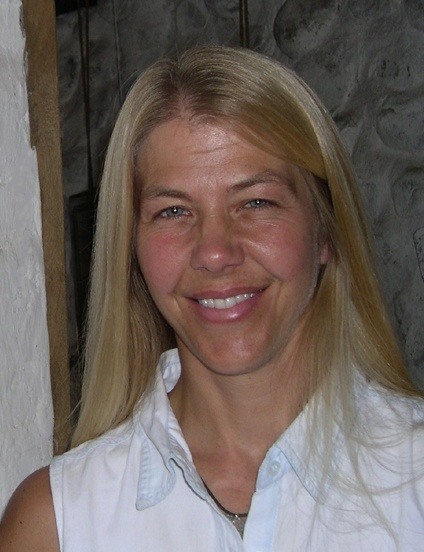
Paula A. White, Ph.D.
Senior Research Fellow
Center for Tropical Research
Paula White is a wildlife biologist specializing in field studies of wild carnivores. Since 1985, she has worked on a variety of carnivore species, from killer whales to African genets, investigating distribution, habitat use, social organization, predation, disease, genetics, and more. Her primary research interests include behavioral ecology and the evolution of sociality in carnivores in relation to food resources.
With a background in both wildlife management and the biological sciences, Paula is keenly aware of the need for improved information-sharing between managers and academics, and has sought to build bridges to help ensure that agencies and other policy-makers have access to robust science upon which to base informed decisions that can directly impact conservation.
White conducts research primarily in North America and Africa. From 2004-2014, she developed and ran the Zambia Lion Project (ZLP); the first study to genetically characterize Zambia’s lions. Working with national wildlife agencies including Zambia’s Department of National Parks and Wildlife (DNPW) and the USFWS, as well as international regulatory committees e.g., Convention on International Trade in Endangered Species of Wild Fauna and Flora (CITES), ZLP also was instrumental in developing age criteria for wild lions as part of broader regional and global efforts promoting sustainable trade.
Paula is currently a Senior Research Fellow at UCLA’s Center for Tropical Research, Institute of the Environment and Sustainability. She is a long-time member of the International Union for Conservation of Nature (IUCN) Canid Specialist Group and the African Lion Working Group. Her current research is focused on pioneering techniques to estimate age in wild carnivores, and the effects of climate change on insular Arctic fox populations in Alaska.
1985. B.A. Biology, University of California, Santa Barbara. Honors.
1992. M.S. Wildland Resource Science, University of California, Berkeley.
2002. PhD. Integrative Biology, University of California, Berkeley.
Recent publications listed below. Additional publications may be found on ResearchGate.
White, P.A., Bertola, L.D., Kariuki, K., and H.H. de Iongh. 2024. Human procurement of meat from lion (Panthera leo) kills: Costs of disturbance and implications for carnivore conservation. PLOS ONE doi:10.1371/journal.pone.0308068
Bowyer, R.T., Bleich, V.C., White, P.A., and J.L. Rachlow. 2024. Advances in the conservation of large terrestrial mammals. Frontiers. doi:10.3389/fevo.2024.1421638
Clements, H., et al. (many authors including P.A. White). 2024. The bii4africa dataset of faunal and floral population intactness estimates across Africa’s major land uses. Nature Scientific Data 11:191 | https://doi.org/10.1038/s41597-023-02832-6.
Norén, K., White, P.A., and A. Angerbjörn. 2023. Arctic fox Vulpes lagopus (Linnaeus, 1758). Pages 1-26 in K. Hackländer and F.E. Zachos, eds. Handbook of the Mammals of Europe. Springer, Cham. https://doi.org/10.1007/978-3-319-65038-8_116-1.
Hiller, T., Nistler, C., Reding, D., White, P.A., and F. Bled. 2022. Sex identification and age estimation of bobcats and implications for management. Wildlife Society Bulletin doi: 10.1002/wsb.1328.
White, P.A., and B. Van Valkenburgh. 2022. Low-cost forensics reveal high rates of non-lethal snaring and shotgun injuries in Zambia’s large carnivores. Frontiers in Conservation Science doi: 10.3389/fcosc.2022.803381.
Van Valkenburgh, B., and P.A. White. 2021. Naturally-occurring tooth wear, tooth fracture, and cranial injuries in large carnivores from Zambia. PeerJ 9:e11313 doi:10.7717/peerj.11313.
Mitchell, C.D., Bleich, V.C., Bowyer, R.T., Heffelfinger, J.R., Stewart, K.M., and P.A. White. 2021. A call for more nuanced dialogues about trophy hunting. Journal of Wildlife Management 85(3):418-422. https://doi: 10.1002/jwmg.22017.
Curry, C.J., White, P.A., and J.N. Derr. 2019. Genetic analysis of African lions (Panthera leo) in Zambia support movement across anthropogenic and geographical barriers. PLOS ONE 14(5): e0217179, https://doi.org/10.1371/journal.pone.0217179.
White, P.A., and A.J. Kim. 2018. A summary report and photographic catalogue of African wild dogs (Lycaon pictus) in the southern Kafue ecosystem, Zambia 2007-2012. Canid Biology & Conservation 21(2):4-11, http://www.canids.org/CBC/21/wild_dogs_in_Zambia.pdf. doi: 10.6084/m9.figshare.5619187.
Bolton, J.L., White, P.A., Burrows, D.G., Lundin, J.I., and G.M. Ylitalo. 2017. Food resources influence levels of persistent organic pollutants and stable isotopes of carbon and nitrogen in tissues of Arctic foxes (Vulpes lagopus) from the Pribilof Islands, Alaska. Polar Research Special Issue: Arctic Fox 36(2): http://doi.org/10.1080/17518369.2017.1310994.
Spraker, T.R., and P.A. White. 2016. Shaggy lame fox syndrome in Pribilof Island Arctic foxes (Alopex lagopus pribilofensis), Alaska. Veterinary Pathology Published on-line before print 19 August 2016; doi:10.1177/0300985816660745. [2017 54(2):258-268].
Bertola, L.D., Jongbloed, H., van der Gaag, K., de Knijff, P., Yamaguchi,N., Hooghiemstra, H., Bauer, H., Henschel, P., White, P.A., Driscoll, C.A., Tende,T., Ottosson,U., Saidu,Y., Vrieling K., and H.H. de Iongh. 2016. Phylogeographic patterns in Africa and high resolution delineation of genetic clades in the lion (Panthera leo). Scientific Reports 6, 30807; doi:10.1038/srep30807.
White, P.A., and J.L. Belant. 2016. Individual variation in dental characteristics for estimating age of African lions. Wildlife Biology 22(3):71-77, doi:10.2981/wlb.00180.
White, P.A., Ikanda, D., Ferrante, L., Chardonnet, P., Mesochina, P., and R. Cameriere. 2016. Age estimation of African lions Panthera leo by ratio of tooth areas. PLOS ONE 11(4): e0153648, doi:10.1371/journal.pone.015648. Figshare doi: 10.6084/m9.figshare.3159430.
Curry, C.J., White, P.A., and J.N. Derr. 2015. Mitochondrial haplotype diversity in Zambian lions: bridging a gap in the biogeography of an iconic species. PLOS ONE 10(12): e0143827, doi:10.1371/journal.pone.0143827.

